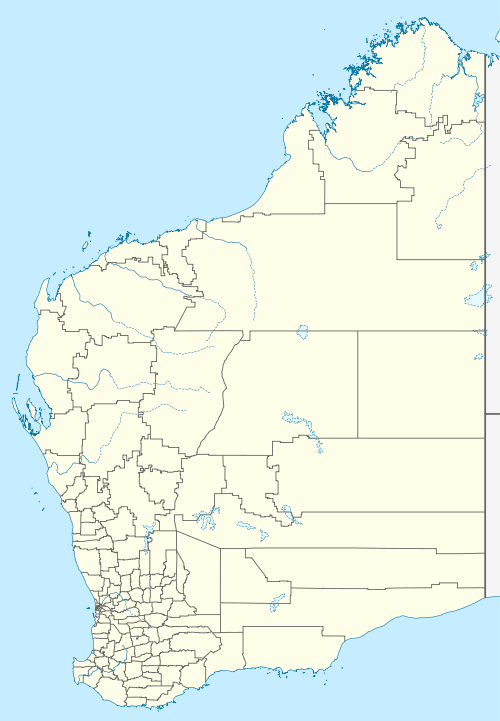Ludlow, Western Australia
Ludlow is a locality in the local government area of the City of Busselton near the Tuart Forest National Park. At the 2016 census, the area had a population of 108.[1]
| Ludlow Western Australia | |
|---|---|
 Ludlow | |
| Coordinates | 33°47′S 115°2′E |
| Population | 108 (2016 census)[1] |
| Postcode(s) | 6280 |
| Time zone | AWST (UTC+8) |
| Location | |
| LGA(s) | City of Busselton |
| State electorate(s) | Vasse |
| Federal Division(s) | Forrest |
History
The Wardandi people inhabited the Ludlow area before European settlement.[2] A school, Ludlow School (originally known as Ludlow Bridge School), existed in the area as early as 1866, but initially operated intermittently due to low patronage.[3]
A pine plantation was first set up at Ludlow in 1909,with a nursery being developed in 1916.[3] After the passage of the Forestry Act (1918), Conservator of Forests Charles Lane Poole set up a small forestry settlement in the area, along with the Ludlow Forestry School, the first such institution in Western Australia, which operated from 1921 to 1927.[2][3] During the 1920s the area was also part of the Group Settlement Scheme for dairy production, and a general store and district office were built, as well as a new school building for children in the Ludlow area.[3][4]
The first thinnings were harvested from the pine plantation in 1936/37 and by the early 1940s timber from Ludlow was being used to make cases and crates for food storage during World War II.[3] During the post-war housing boom, Ludlow was used to supply plywood for the housing industry. European immigrants ("New Australians") began working in the Ludlow pine plantation and by the mid-1950s a sawmill and planer mill, along with workers' cottages that formed the main Ludlow forestry settlement, had been constructed.[3] The settlement was divided by the Ludlow River; the north side, where most of the cottages were built, is in the area of the Shire of Capel and not in Ludlow proper.[5]
By the early 1970s the sawmill had been closed and plantings were discontinued in the pine plantation in 1973; the planer mill was closed a few years later.[3] The Tuart Forest National Park was declared in the area in 1987 and The Ludlow Forestry Mill and Settlement was registered on the State Register of Heritage Places in 2006.[5] In 2016 the Department of Parks and Wildlife, which rented out the cottages, evicted the occupants, citing maintenance issues, age, and housing conditions; the cottages have since been abandoned.[6]
References
- Australian Bureau of Statistics (27 June 2017). "Ludlow". 2016 Census QuickStats. Retrieved 11 August 2019.

- "Ludlow history". Ludlow Tuart Forest Restoration Group. Retrieved 11 August 2019.
- "Assessment Documentation: Ludlow Forestry Mill and Settlement" (PDF). Heritage Council of Western Australia. Retrieved 12 August 2019.
- "Ruabon - Ludlow Settlers Memorial". Monuments Australia. Retrieved 15 August 2019.
- "Ludlow Forestry Mill and Settlement". Heritage Council of Western Australia. Retrieved 15 August 2019.
- Willix, Pierra (31 January 2017). "Ludlow tourism potential". Busselton Dunsborough Times. Retrieved 15 August 2019.